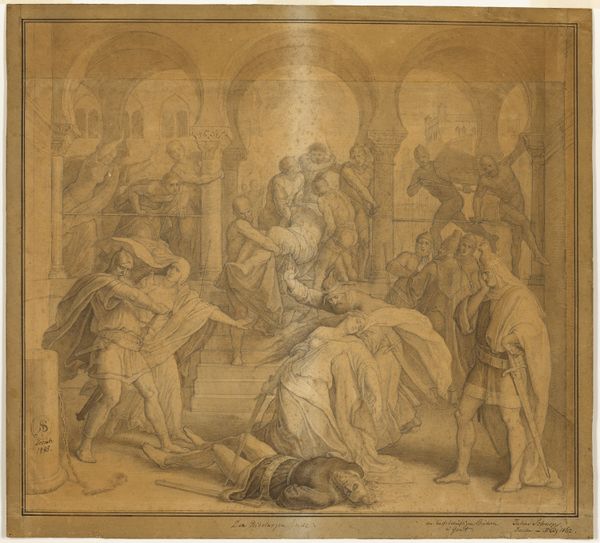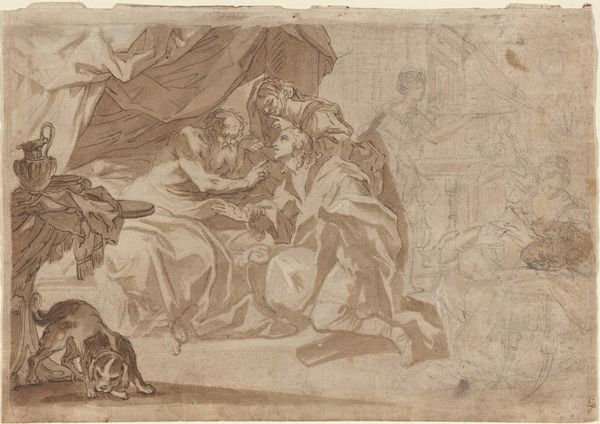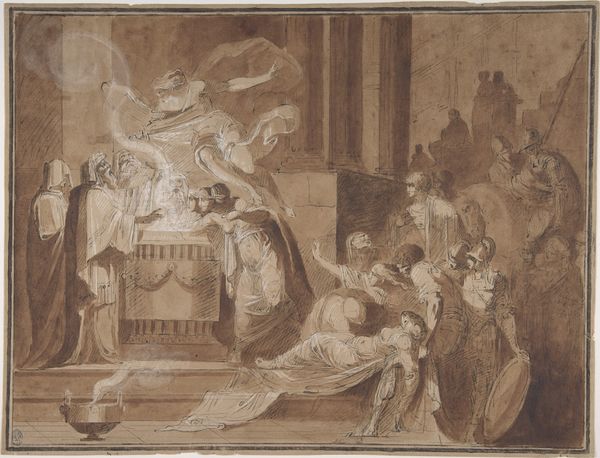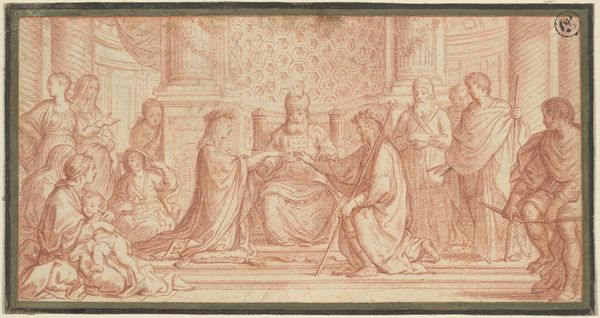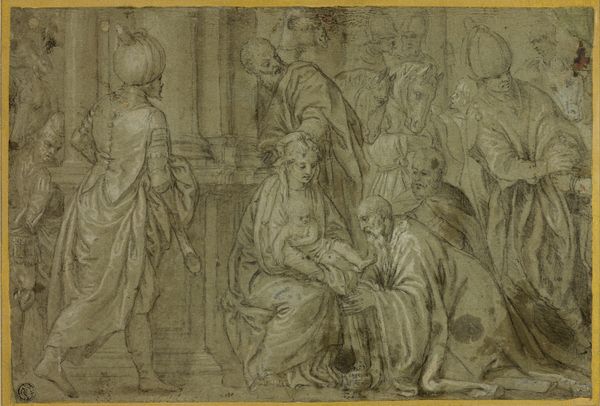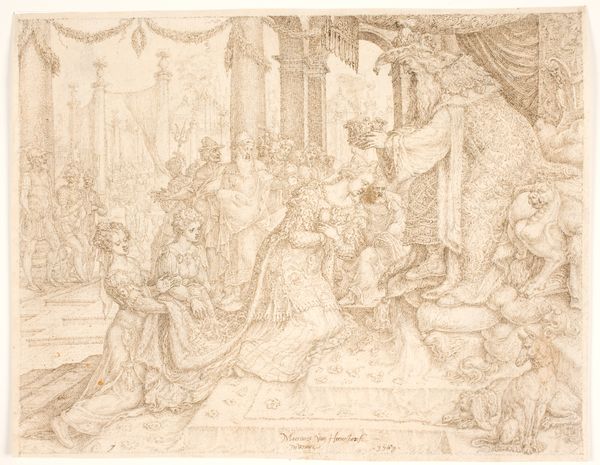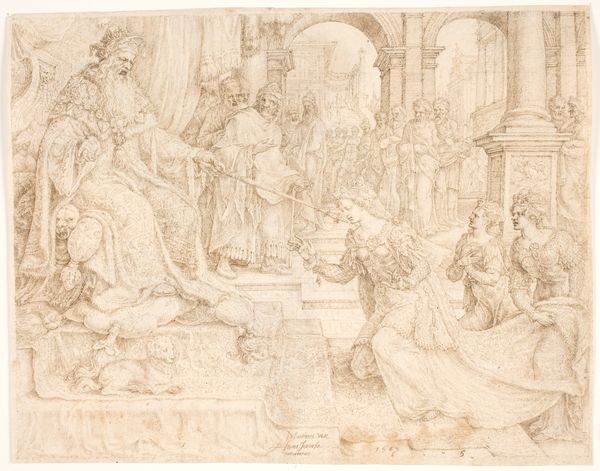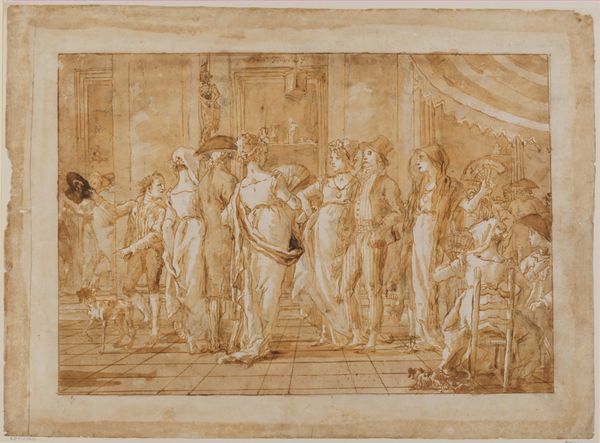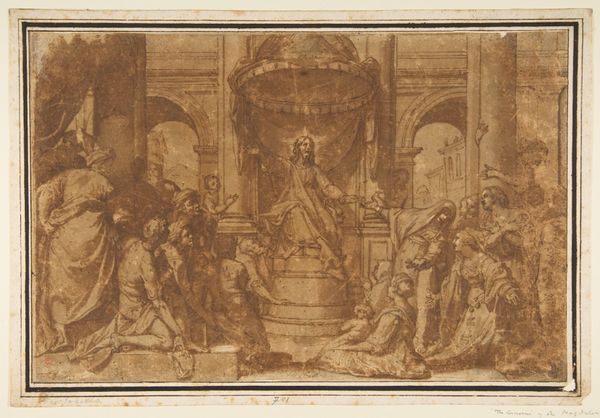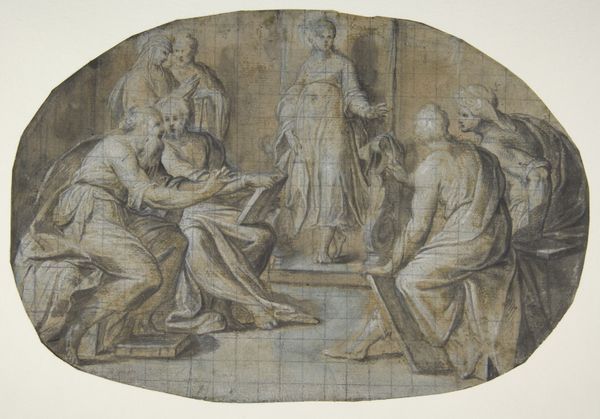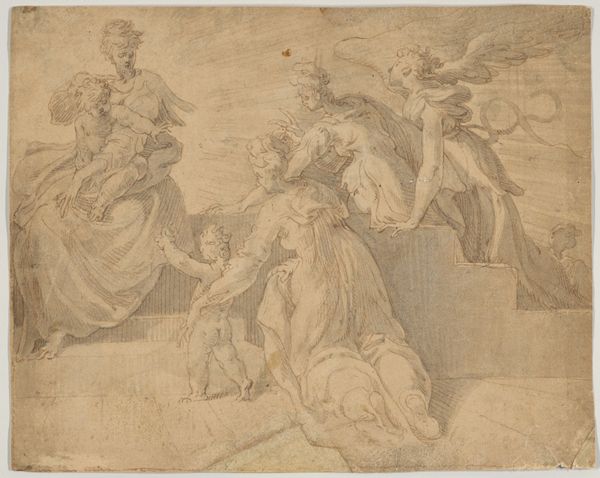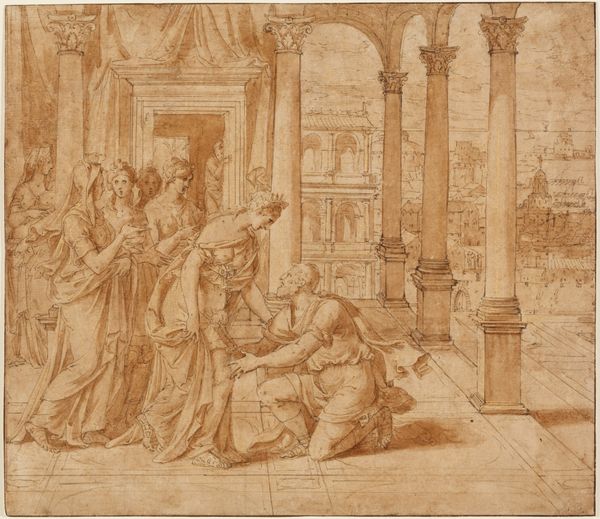
drawing, print, paper, chalk
#
drawing
#
narrative-art
#
baroque
#
ink painting
# print
#
figuration
#
paper
#
chalk
#
genre-painting
#
history-painting
#
academic-art
Dimensions: 406 × 525 mm
Copyright: Public Domain
Curator: This is William Hogarth's "Moses Brought to Pharaoh’s Daughter" from 1751, a drawing done with chalk and ink on paper. I’m struck by how he utilizes these relatively humble materials to depict such a grand, historical scene. Editor: It's interesting you call the materials humble. I would have expected grand artistic techniques for something related to the Pharaohs. I’m initially drawn to the overall monochromatic palette, the sienna ink creating a sense of warmth, or perhaps even implied age to the piece. What do you see as significant in Hogarth’s approach to this narrative? Curator: Precisely. Hogarth's choice isn't accidental. Consider the laborious process of printmaking at the time – engravings, etchings. The accessibility of prints meant these images circulated widely, impacting public perception. Think of Hogarth not just as an artist, but as a manufacturer of sorts. How do the materials shape the meaning here, do you think? Editor: That makes a lot of sense. Knowing prints allowed art to spread to more people...maybe his art being in sienna gives an every-day feel for people to easily relate to, to move it away from inaccessible opulence? It definitely democratizes this biblical narrative. It is accessible on many levels. Curator: Exactly. It connects to ideas of industry, production, and audience, making high art and its social influence. Notice how Hogarth uses materials to bridge historical grandeur with the concerns of his contemporary world. Editor: That gives me a completely new way to look at art – thinking about the physical means of production, the cost and labor to make the drawing, and how its eventual distribution impacted the world at large. It moves away from what I typically analyze art through, in terms of aesthetic and into one about industry. Curator: It is about how artistic choices in production change history! The humble tools made art a popular revolution.
Comments
No comments
Be the first to comment and join the conversation on the ultimate creative platform.
